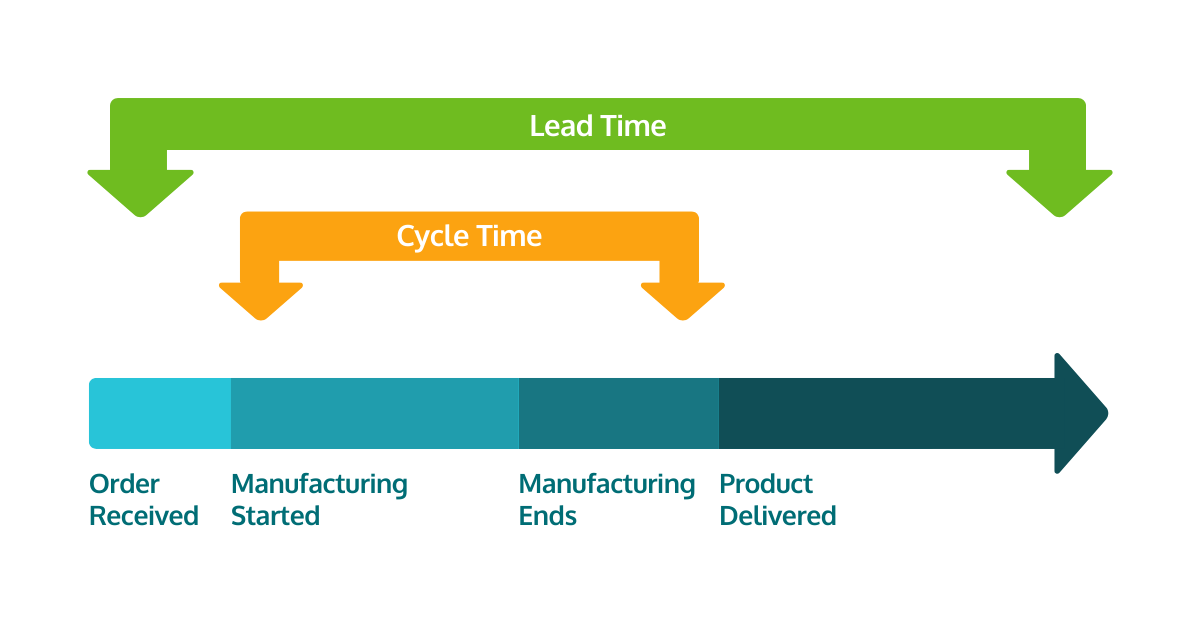-
- marketing agility
- Teams
- Organizations
- Education
- enterprise
- Articles
- Individuals
- Transformation
- Solution
- Leadership
- Getting Started
- business agility
- agile management
- going agile
- Frameworks
- agile mindset
- Agile Marketing Tools
- agile marketing journey
- organizational alignment
- Agile Marketers
- People
- Selection
- (Featured Posts)
- strategy
- agile journey
- Metrics and Data
- Kanban
- Resources
- Why Agile Marketing
- agile project management
- self-managing team
- Meetings
- Scrum
- agile adoption
- scaled agile marketing
- tactics
- scaled agile
- AI
- Agile Meetings
- agile marketing training
- agile takeaways
- Agile Leadership
- agile coach
- enterprise marketing agility
- Scrumban
- state of agile marketing
- team empowerment
- Intermediate
- agile marketing mindset
- agile marketing planning
- agile plan
- Individual
- Team
- Videos
- agile marketing
- kanban board
- Agile Marketing Terms
- agile transformation
- traditional marketing
- FAQ
- agile teams
- Agile Marketing Glossary
- CoE
- Scrumban
- agile
- agile marketer
- agile marketing case study
- agile marketing coaching
- agile marketing leaders
- agile marketing methodologies
- agile marketing metrics
- agile pilot
- agile sales
- agile team
- agile work breakdown
- cycle time
- employee satisfaction
- marketing value stream
- marketing-analytics
- remote teams
- sprints
- throughput
- work breakdown structure
- News
- agile brand
- agile marketing books
- agile marketing pilot
- agile marketing transformation
- agile review process
- agile team charter
- cost of delay
- hybrid framework
- pdca
- remote working
- scrum master
- stable agile teams
- stand ups
- startups
- team charter
- team morale
- user story
- value stream mapping
- visual workflow
31 Modern Marketing Metrics: What to Track and What to Ignore
Eric Halsey
As marketers, it can feel like our work lives are ruled by the iron fist of numbers. Every year it seems like the amount of data we need to collect (and somehow sort through) goes up while our budgets go down.
While some of us love nothing more than diving into some metrics to transform them into usable insights, many of us are, to put it politely, more comfortable with words than numbers. For those marketers, the increasing importance of marketing metrics is their worst nightmare.
But it doesn’t have to be this way.
Understanding the fundamentals of marketing metrics is the first step towards being comfortable using them to get results. After all, they’re essential for building strategies and long-term planning.
In fact, this year’s State of Agile Marketing Report showed that more than 1 in 5 marketing functions switched from annual to quarterly planning this year alone. As marketing evolves faster than ever and teams change how they plan, getting metrics right has never been more important.
What Is Marketing Measurement?
Put simply, marketing measurement is the process of quantifying the results of your marketing activities. This could be something like the dollar value of sales generated from a promotion or something more abstract like a Net Promoter Score (NPS). But while the basic idea here is straightforward, getting your marketing measurement right can be tricky.
Why Is Marketing Measurement so Important?
Trying to do effective marketing without proper measurement is a bit like trying to bake without a recipe or buying all your furniture without getting out a tape measure. Sure it can work, but 9 times out of 10 it’s going to be a disaster.

Using measurement and statistics is the only reliable way to transform the mountains of data generated by most modern advertising from noise into actionable knowledge. In particular, a shocking number of marketers don’t use statistical significance to confirm whether their data is sufficient to act on. Neglecting this step can mean you THINK your data says A is better than B but the reality is that you don’t know.
And there are few things more dangerous than someone acting with confidence on bad information.
Put another way, not using metrics means you’re essentially running your marketing operations on vibes. You don’t know whether the information you have should be driving your decisions in one direction or another.
But beyond all of that, measurement is how you create experiments and experiments are key to long-term marketing success. They enable you to test ideas and make decisions that are data-driven, supercharging your ability to learn valuable lessons you can apply to improve your marketing.
Ultimately, however, the real importance of marketing measurement boils down to the marketing metrics you’re using.
What Are Marketing Metrics?
If marketing measurement is the process of quantifying all the marketing work you do, marketing metrics are the actual numbers you use for that task. Again, this could be something like NPS, a conversion rate, or Customer Lifetime Value CLV.
Why Are Marketing Metrics so Important?
While measuring your marketing in general is important, choosing the right marketing metrics is equally so. The simple reason is that not all marketing metrics are created equal. As we’ll discuss later, vanity metrics can easily lead you in the wrong direction.
But beyond simply quantifying your progress, marketing metrics have a bigger role to play as a north star. If properly picked, they offer a clear direction and goals for a marketing team to work towards. In this way, they guide our behaviors, keep us focused, and even provide accountability.

Put another way, the wrong metrics incentivize us to make bad decisions that hurt the ability of marketing to deliver value. The right ones enable us to focus on what matters, make better decisions, and actually deliver the maximum value for our stakeholders.
Common Metric Challenges and How to Address Them
Just saying that you should be using marketing metrics is one thing, but there are a lot of common traps marketers tend to fall into. In particular, many of these metrics can be affected by sales or customer success teams, so it’s vital to consider them alongside related metrics to give yourself greater context.
But don’t panic, there are a few basic concepts you can familiarize yourself with to avoid most of those challenges.
Understand the Difference Between Outputs and Outcomes
Our Agile marketing coaches have seen this confusion lead to problems countless times. So let’s start with the basic difference. A marketing output is the deliverable you expect from your activities. That might be email copy, articles, etc.
By contrast, business outcomes are the things you’re trying to achieve with those outputs. For example, you might produce email copy so you can send emails to customers and reduce customer churn. The emails are the output but the reduced churn is the outcome.
You can have a marketing team that’s incredibly great at producing outputs, but that doesn’t mean anything if those outputs don’t ultimately lead to business outcomes. In fact, tying the two together is really at the core of what makes for effective marketing.
Forgetting to Tie Marketing Metrics to Strategic Plans
Building off the last topic is the importance of ensuring your marketing metrics actually contribute towards a broader strategic goal. This is both to ensure your marketing activities are impacting the bottom line and to prove the importance of marketing.
When marketing budgets are cut and marketers feel neglected within the organization, the first step towards fixing those problems is ensuring leaders see the value marketing brings. That process begins with clearly showing how marketing is making a difference to their key priorities.

Choosing the Wrong Marketing Metrics
As we’ll show in a moment, the list of potential marketing metrics is long. Choosing the wrong ones often means that your entire marketing operation will end up focusing on the wrong things.
For example, if your strategic goal is improving revenue and you decide that to achieve that goal you will focus on improving your website’s conversion rate, you have a problem. It’s helpful to think in absolute terms, so if you were able to get your conversion rate up to 100% would your problems be solved?
Not necessarily because what’s missing is the traffic. If traffic is declining while your conversion rate increases, you can easily end up with stagnant or even declining revenue. Conversion rates are important, but if you make them your north star you can easily neglect overall traffic numbers.
So when choosing a marketing metric, ask yourself “what would happen if we succeeded in increasing this number but other numbers stayed the same?” If that metric isn’t enough for you to achieve your strategic goals, then consider adding another or changing.
The final point to make here is not to be afraid of changing your marketing metrics. It’s far better to make a change midway through a planning period rather than stick to something that’s not working.
Before moving on to the 9 most important general marketing metrics, why don't you take a minute to find out if bad processes are eating up your marketing budget?
9 Most Important General Marketing Metrics
Beginning with general marketing metrics, here are numbers most marketers will want to at least be aware of.
Customer Lifetime Value (CLV)
As marketers, it’s easy for us to get so focused on finding new customers that we totally ignore the power of high CLV. Low CLV and high churn can mean that even when marketing becomes extremely effective at converting new customers, those customers simply get put into a “leaky bucket” which results in poor overall Return On Investment (ROI).
Often, this metric is one marketers will need to monitor and work on alongside functions like customer support, so it may be difficult to use as a primary metric. But it’s still a good number to keep an eye on because it helps marketers quantify the value of a new customer.
Customer Acquisition Cost (CAC)
A vital marketing metric nearly all teams should be at least tracking is their CAC. Alongside CLV, this is a foundational metric that will help you understand how well your marketing is operating on a fundamental level.
To calculate it, simply look at how much you spend on marketing and sales, and how many customers you’re acquiring for that spend. This kind of top-down view can be helpful because it’s easy to forget that marketing may be wasting resources in one area while going great in another. By thinking about CAC as a whole, you can consider how much specific marketing activities are contributing to acquiring customers and whether you should shift resources.
CLV to CAC Ratio
It’s easy to say “our marketing is doing great because we’re bringing in so many customers” but if your CLV to CAC ratio is negative then you’re actually losing money. Essentially, looking at either of these metrics in isolation can be dangerous for that reason, so it’s important to consider their ratio to know whether your marketing efforts are actually bringing ROI.
Marketing Qualified Leads (MQLs)
If your buyer’s journey is longer, more complex, and has multiple stages, you likely want to look at MQLs. This is when someone has shown some interest in your product or service but isn’t ready to make a purchase yet. For example, they may have signed up for a downloadable resource or a webinar.
Similar to looking at total traffic and conversions, you want to ensure you’re bringing in enough MQLs and then successfully converting them. So MQLs are a marketing metric that should be considered alongside others like conversions and CAC.
Sales Qualified Leads (SQLs)
While MQLs are prospects that have shown some interest, SQLs are those who are ready to convert. This could be because they’ve already had several touchpoints along their journey or that they made it clear they are ready to convert from the start. For example, if you sell HR management software and they downloaded a PDF titled “How to Choose the Best HR Management Software” they could be classified as an SQL from the start.
As the name implies, SQLs are usually handed over to a sales team, so tracking this metric should be done alongside that function. For example, if sales feels the quality of the SQLs marketing is providing is poor, the two functions need to work together to understand how to track and improve that metric.
Net Promoter Score (NPS)
While NPS is usually associated with customer success teams, it can also be useful for marketers. This metric measures how likely someone is to promote your product or service to people they know. 0-6 indicates people who dislike your brand, 7-8 for those who are just satisfied, and 9-10 for people who are loyal and will actively promote you.
NPS can also be useful for marketers to determine whether they’re attracting the right customers. If you’re getting low scores, you may want to revisit your targeting. Otherwise, while NPS isn’t typically a major marketing metric, it is useful to know how many existing customers might, for example, be interested in aiding marketing efforts by sharing their experiences.
Cost Per Lead (CPL)
If you’re working with a sales team, calculating the CAC becomes difficult because both functions play important roles. As a result, it can be difficult to perform experiments and isolate when marketing is having an effect compared to sales. CPL gets around this by focusing on just the cost of a lead.
Bear in mind that looking at CPL in isolation can be dangerous because not all leads are created equal. As a result, you’ll always want to consider CPL alongside sales metrics showing the quality of leads.
Customer Churn
Depending on how your organization is structured, customer churn may be more of a customer success metric or a marketing one. But looking at how many of your customers stay with your product or service over time is a great way to look at both the quality of customers you’re bringing in and the quality of your product or service.
Marketing ROI
The last metric here is perhaps the single most important. Marketing ROI may not be as granular as others on this list but it’s great to give you a general idea of how much value marketing is generating for the organization.
For this reason, marketing ROI can be a difficult north star metric for individual marketing teams, but works as an excellent one for marketing as a whole. That said, this is an extremely important marketing metric for teams investing heavily in advertising.
The 5 Most Important Digital Marketing Metrics
These days, digital marketing has become the de facto focus for most marketing functions, so we’re starting here. These digital marketing metrics are also particularly important because, relative to pre-digital types of marketing, it relies far more heavily on data.
Reach
One of the most fundamental goals of marketing is to get your brand in front of eyeballs. Reach measures this, though the exact marketing metric you use can vary from impressions to page views. Regardless of the precise way you approach it, having a sense of how many people are being made aware of your brand over time is a good starting point for digital marketing.
Click-Through Rate (CTR)
The first major hurdle of digital marketing is getting traffic to your website, but once that happens you need to ensure they don’t simply leave. CTR tracks what percentage of the traffic that lands on a particular page click somewhere to move to a second page.
However, like with so many of these metrics, you need to consider what pages they are going to and how many ultimately convert.
Conversion Rate
Speaking of conversion, the rate of traffic that ultimately converts into customers or leads is the next major marketing metric digital marketers should be looking at. By understanding how many of the people who arrive on your site become customers you can get a sense of both the quality of your traffic and how well your site is performing.
Time on Page
When you’re creating online content, looking at how much time visitors spend on those pages can be a great way to tell whether they’re actually reading what you’ve written. Of course, people can also spend time on a page without really taking in the content, so it can be helpful to use a tool like Hotjar to see how far visitors have scrolled on your page to add some context to this metric.
Returning Visitors
While this final digital marketing metric is getting trickier than ever to track due to recent changes in cookies, it can still be helpful, when possible, to see that visitors are coming back. This can enable you to see what content is performing well or can be used to identify MQLs for sales teams.
The 3 Most Important Social Media Marketing Metrics
Social media marketing is a bit of a minefield when it comes to marketing metrics. Potential vanity metrics abound and it’s easy to focus on the wrong thing.
Engagement Rate
The first thing to point out is that engagement on its own should not be a primary metric you track because it can be so misleading. A post can get huge engagement because people are reacting negatively to it and there’s little guarantee even positive engagement will translate into something more concrete like conversions.
That said, looking at the engagement rate can be useful. The reason is that so many social media algorithms want to see that your audience is engaging with your content and will reward you with greater reach. So understanding the rate of engagement as opposed to the absolute number can be helpful.
This is also a useful way to compare yourself to competitors by looking at average social media engagement rates by industry.
Virality Rate
If your social media marketing strategy is built on trying to create viral content (and that’s probably not the best strategy anyway) your virality rate (AKA viral coefficient) is a good way to quantify your success. Just multiply the number of invitations or shares generated by each user by the average conversion rate and you have a good idea of how viral something is going.
Video Completion Rate
Like with the other social media marketing metrics listed here, this number is about quality of engagement over quantity. If you’re creating video content for social media, knowing how many people who begin watching actually finish a video can serve as a good proxy for how relevant that content feels to them.
That said, this can easily become a vanity metric and should only be used alongside others. Users finishing your videos doesn’t translate into meaningful marketing results on its own, but it can help you hone your content to be more effective.
The 6 Most Important Email Marketing Metrics
One major advantage to email marketing is that your metrics are quite consistent and reliable. That said, focusing on the wrong email marketing metrics can also cause problems. Here are the 4 you’ll want to pay the most attention to.
Open Rate
Fundamentally, if no one is opening your emails then they’re worse than useless. Worse because you’re essentially annoying your prospects and increasing the likelihood your emails get marked as spam. So ensuring you have decent open rates should be a baseline for your email marketing.
Conversion Rate
Emails can be a great way to cultivate, educate, and move a prospect down the marketing funnel, but at the end of the way you want conversions (however you define that). This begins with good CTRs but the ultimate metric you’re trying to drive is conversions.
Unsubscribe Rate
This is a major email marketing metric you can’t afford to ignore because high unsubscribe rates both means you’re failing to deliver value to your customers and puts you at risk for getting your emails marked as spam. In other words, if this metric gets too high your entire email marketing operation can go belly up.
Bounce Rate
While we listed bounce rate as a vanity marketing metric below, that applies to websites. For email marketing, this is a crucial metric. There are two types: a hard bounce is when an email bounces from a server and is marked as undeliverable because the email or domain does not exist. A soft bounce is when the email server accepts the email but another factor like the mailbox being full of the email itself being too large causes it to be rejected.
High bounce rates of either type, like many unsubscribes, can help push you into the spam category and destroy the effectiveness of your email marketing.
List Growth Rate
The best emails in the world don’t mean very much if you have no one to send them to. That’s why you can’t afford to neglect your list growth rate. Often this will be the responsibility of non-email marketers, so it may be out of your hands, but that doesn’t mean you can ignore it.
Revenue Per Subscriber
Beyond simply looking at how many email subscribers convert to customers, if you sell more than one product or service it’s important to consider what they’re buying. By calculating the average revenue per subscriber, you can precisely quantify the value of your total list. This makes it easier to justify asking for more resources for email marketing.
This is also a particularly important marketing metric for ecommerce brands which might sell directly through email. These direct sales are much easier to measure compared to the relationship building other email marketing focuses on.
The 7 Most Important Advertising Metrics
With PPC campaigns long since a mainstay of modern marketing, it’s also got a long list of metrics to keep track of.
Value Per Visit
The core mission of all marketing should be creating value for stakeholders. Crucially, “value” can mean anything from products they want to use to simply interesting articles that enhance their lives. As a result, value per visit can function as a useful way to track the value advertising creates beyond dollars.
Cost-Per-Click (CPC)
At its core, digital advertising is all about paying for relevant clicks, so the cost of each of those clicks is a fundamental marketing metric. Obviously, this needs to be factored alongside other metrics to determine the quality of those clicks, but CPC is still a basic number digital advertisers should always be monitoring.
Cost-Per-Thousand-Impressions (CPM)
Because of the scale most Pay-per-click (PPC) campaigns operate at, often the CPC number can get too small to be useful. In these cases, counting the cost of 1,000 clicks can make it easier to manage and contextualize campaign performance.
Cost-Per-Conversion (CPC)
As we mentioned, clicks don’t mean very much unless you’re able to convert them. This is why tracking the CPC (not to be confused with the previous CPC) alongside the CPC or CPM is so useful. The two metrics together give you an idea of how well your campaigns are delivering customers to your organization.
Average Cost-Per-Acquisition (CPA)
The cost per conversion can fluctuate quite a lot even over the course of a few hours, so it’s helpful to look at the average over time to get a broader idea of where you are. That said, those fluctuations can tell you important things about when your ads perform well, so don’t ignore them entirely.
Return On Advertising Spend (ROAS)
This is the bird’s eye marketing metric that drives most digital advertising. Because digital ad campaigns always have costs besides what’s literally being paid to platforms for clicks, ROAS takes all of that into account to ensure those ads are producing ROI. Those extra costs include the salary of the person managing the ads, designers, copywriters, managers, etc.
Quality Score
Much in the same way unsubscribes can hurt email campaigns, a low-quality score is essentially a death knell for an ad campaign. This score, which varies somewhat by platform, is an aggregate of metrics like CTR, ad relevance, and how people behave after clicking through your ads. The better your score, the lower your ad costs, and vice versa.
The 4 Most Important Marketing Process Metrics
All the other marketing metrics we’ve listed so far are mainly centered around the results marketing produces. However, effective marketing also relies heavily on effective marketing processes, so it’s worth tracking these metrics as well.
Lead Time
The reality is that most marketers have some piece of work that’s been in progress for weeks or even months. The longer those kinds of tasks take to get completed, the longer the time between inputting resources and getting something useful out. Lead time is a marketing metric designed to measure that gap, literally the time between an item of work is requested and completed.
By tracking your lead time, you can determine how effective your team is at minimizing the time it takes to transform effort and resources into valuable marketing outcomes.
Cycle Time
While lead time covers the time between when work is requested and completed, cycle time is narrower, covering the time between work beginning and ending. In other words, it doesn’t include the time between when work is requested and marketers begin working on it. It also doesn’t include the time between work being completed and being delivered.

Velocity
Another basic way to measure how effective your team is at producing work is by calculating their velocity. This is simply the amount of work your team is able to produce in a set amount of time, often a Scrum sprint. When, for example, you break your work down into two-week sprints, tracking your velocity over time is a great way to see how effective your team is.
Throughput
If you’re using Kanban instead of Scrum, throughput is a similar metric to velocity and enables teams to measure how many work items they can complete in a set period.
6 Vanity Marketing Metrics to Avoid
One vital point we have to make at the beginning here:

Because ultimately a vanity metric is any marketing metric that feels important but ultimately doesn’t move the needle. That said, the examples we’re sharing here are the most common culprits.
Impressions
Most vanity metrics are essentially intermediary stages. Sure they might be the first step towards a more impactful metric, but on their own, they don’t mean very much.
Impressions are maybe the best example of that.
Using the test we mentioned earlier, ask yourself “if our social media posts got millions of impressions but no other metric changed, would that move the needle?” The answer is no. Impressions are only really valuable if they lead to something like conversions, and in that case, your marketing metric should be conversions.
After all, if you want to drive impressions above all else, you could just spend your entire marketing budget promoting social media posts. Doing this you could almost certainly reach your impressions goal, but to what end?
So while impressions are a seemingly easy way to track brand awareness, it’s usually difficult or impossible to directly tie impressions to a more tangible metric that’s actually going to drive strategic success. As a result, focusing on impressions can often incentivize shallow or click-baitey content that might hurt your relationship with prospects in the long run.
Followers
Much like impressions, followers are only meaningful if they ultimately contribute to other marketing metrics. Your social media profile could have millions of followers but if none of them buy your products or services, they don’t really matter.
Again, you could easily just pay for promotion or even pay places to get you fake followers if that was your north star metric. Instead, ask yourself WHY you want those followers. Determine what your actual final goal is and choose a marketing metric that keeps you focused there.
Likes
It’s the same story here, likes simply are not relevant unless they’re leading to something more substantial. Content that gets likes on social media is not necessarily the same content that’s going to result in actual conversions. Sure, likes are nice when they increase the reach of your post, but they should not be a marketing metric you track and focus on.
Traffic
While the previous three examples are more obvious, traffic is a vanity metric that’s usually more successful at pretending to be a regular marketing metric. The reason is that website traffic can function the same way likes and followers do because if that traffic isn’t converting then it’s not adding value.
Worse, if you’re getting tons of traffic that immediately leaves your site, you’re actually hurting your SEO. So focusing on getting traffic at all costs can do real harm in the long run.
Bounce Rate
The flip side of the CTR is the bounce rate. If someone leaves your site quickly without clicking to another page, they have bounced. But while a high bounce rate can tell you visitors to your site aren’t finding what they’re looking for, it can just as often happen because Google started ranking your page for an unrelated keyword.
So bounce rate can be a useful metric but it can easily become a vanity metric if you take it as gospel and focus too much on it.
Keyword Rankings
We saved the most shocking marketing metric for last. It may sound like high treason to claim that keyword rankings are a vanity metric, but hear us out. Too many brands focus on getting high rankings without considering whether the resulting traffic is the traffic they actually want.
For example. if you’re a furniture brand and rank for “home improvement ideas” it will bring lots of traffic but those people are more likely to be searching for ways to repaint their living room than a new couch. That resulting poor quality traffic will then tell Google that people don’t find your website useful and hurt its overall rankings.
Better Marketing Measurement and Metrics Begin with Mindset
With so many marketing metrics to choose from, it’s never been more important to cultivate the right mindset. Your approach to marketing is what enables you to see through the noise, understand what’s going to really move the needle, and execute effectively.
We have an array of digestible and practical online courses designed to do just that. From prioritization and capacity planning to building an effective culture, our courses leverage years of practical experience in helping organizations transform their marketing through Agile.
Topics discussed
Improve your Marketing Ops every week
Subscribe to our blog to get insights sent directly to your inbox.


